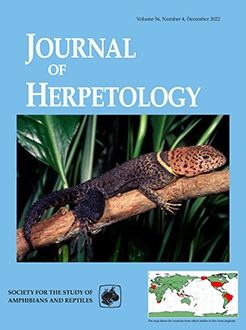Population declines and extinctions associated with infectious diseases of wildlife are increasing in both frequency and severity. Response to infectious disease varies among species and individuals, with some appearing asymptomatic and others experiencing rapid mortality. The amphibian chytrid fungus, Batrachochytrium dendrobatidis (Bd), has been associated with widespread population declines and species extinctions, yet in some geographic regions it elicits a range of sublethal responses that may influence population dynamics in ways that are currently not understood. Our central objective was to evaluate growth and feeding behavior of terrestrial juvenile American Toads (Anaxyrus americanus) and Northern Leopard Frogs (Lithobates pipiens) following exposure to Bd. We manipulated foraging effort through the presence or absence of refugia for prey. We found that both amphibian species grew less when exposed to the pathogen, though the mechanisms contributing to this effect appear not to be the same. American Toads ate equal to or more in feeding trials when exposed to Bd than when unexposed, yet those exposed to Bd still experienced growth limitations. Conversely, Northern Leopard Frogs consumed the same quantity of food no matter their exposure status, but refugia presence had an effect on feeding. These results suggest that sublethal effects of disease can have ecologically relevant impacts in amphibians that can result in reduced size, likely because of high metabolic costs of disease response. Size is both a predictor of time to reproduction and fecundity, and reductions in individual growth may have important consequences for populations.
BioOne.org will be down briefly for maintenance on 17 December 2024 between 18:00-22:00 Pacific Time US. We apologize for any inconvenience.
How to translate text using browser tools
28 March 2023
Exposure to Amphibian Chytrid Fungus Alters Terrestrial Growth and Feeding Rate in Metamorphic Anurans
Jessica L. McQuigg,
Kathryn Kissner,
Michelle D. Boone
ACCESS THE FULL ARTICLE

Journal of Herpetology
Vol. 57 • No. 1
March 2023
Vol. 57 • No. 1
March 2023




